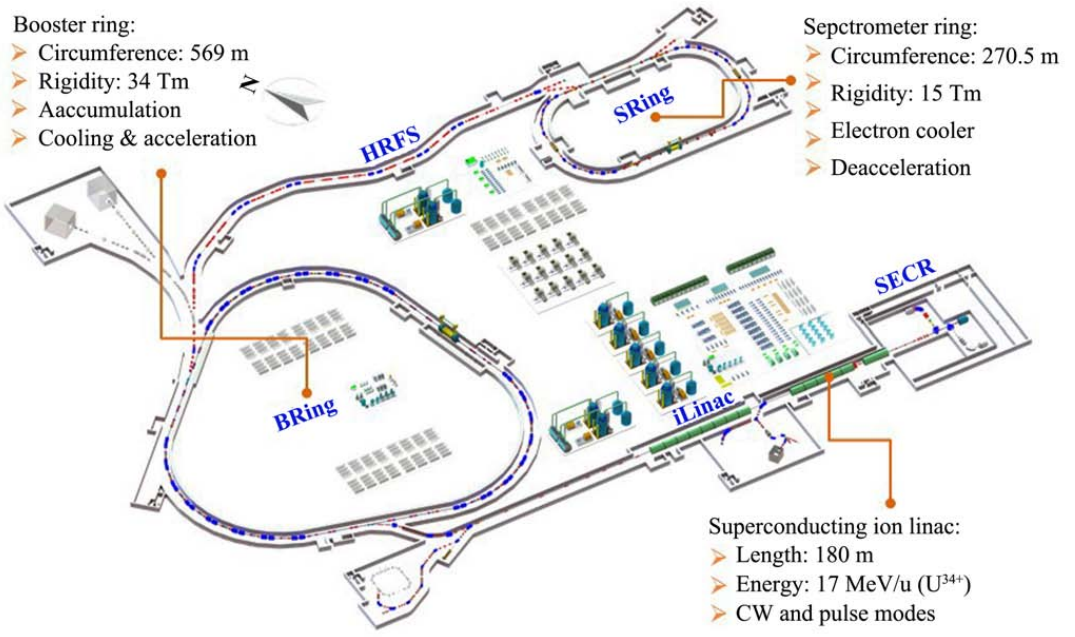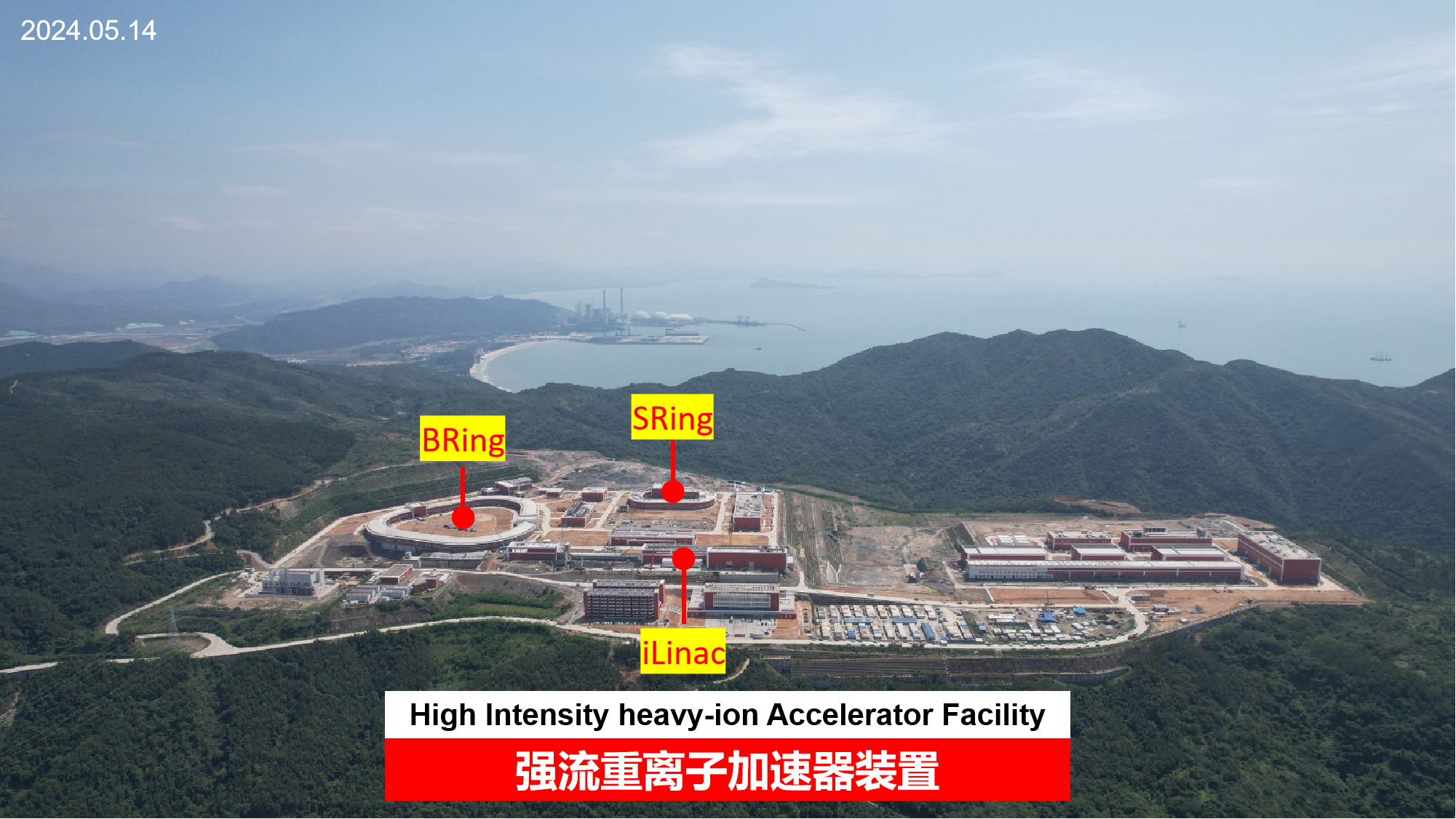Time Schedule
This conference arranges an excursion to the High-Intensity heavy-ion Accelerator Facility (HIAF), which is under construction now. The facility site is located 100 km away from the conference venue. The bus will depart from the conference venue at 1:00 PM on 20th November. The entire facility tour journey is a 2 km walk through the underground tunnel of the HIAF facility.
After the tour, all the participants will go to a banquet together by bus from the HIAF-site directly.
Those who would not join the HIAF facility tour should go to the Banquet place by themselves. The banquet will start at 18:30 on 20th November.
Convener: Dr. Weiqiang WEN (13919175840)
The overview of HIAF
High Intensity heavy-ion Accelerator Facility (HIAF), as one of the important infrastructure projects during the 12th Five-Year Plan period identified by The Medium and Long Term Plan for The Construction of Major National Science and Technology Infrastructure (2012-2030), is constructed by Chinese Academy of Sciences--the legal entity of HIAF--and administered by the Institute of Modern Physics (IMP). The National Development and Reform Commission approved the preliminary design estimate of the total investment of 1.67 billion yuan. The project is located in Huizhou, Guangdong province with a construction period of 7 years, which has started on December 23, 2018.
HIAF is an internationally advanced facility for heave-ion accelerators, capable of producing heavy-ion beams in broad energies with unprecedented intensities as compared with any existing facilities and providing low energy heavy ion beam with the highest peak current intensity, pulse heavy ion beam with the highest energy of 4.25 GeV per necleon worldwide, and nuclear mass spectrometer with the highest measurement accuracy internationally. Therefore, it will provide international leading research conditions for identifying new nuclides, expanding the nuclide layout, studying the structure and reaction mechanism of weakly bound nuclei, and especially for accurately measuring the mass of shore-lived nuclei far from the stability line.
The construction of HIAF includes accelerator system, terminal experiment system and civil engineering supporting facilities. The accelerator system includes a high-intensity superconducting ion source, a superconducting ion linear accelerator, an intensifier, and a beam transmission line system connecting each part. The experiment terminal system includes Low Energy Nuclear Structure Spectrometer, Intensive Ion Beams Irradiation Terminal, radioactive beam line, External Target Terminal, Spectrometer Ring for High-precision Experiments, Dielectron Recombination Spectrometer, High Energy Multi-disciplinary Terminal and high energy density physics terminal. Civil engineering supporting facilities include construction, water, ventilation, electricity and other infrastructures to meet the smooth operation of accelerator system and terminal experiment system.
HIAF, integrating the most advanced technology ion superconducting linac and ring synchrotron, is a heavy ion scientific research device with leading beam index and multi-disciplinary application. Upon completion, HIAF will create world-leading conditions for research in nuclear physics and nuclear astrophysics. It will also provide advanced experiment platform for application research of heavy ion beam as well as theoretical, methodological, technical, and talent support for the development, safety, and application of nuclear. Based on HIAF, the position of China's heavy ion scientific research will switch from "following status" to "parallel level" and gradually realize "leading role", to become a heavy ion scientific research center with great influence in the world. At the same time, adhering to the concept of opening and sharing large scientific devices, HIAF warmly welcomes the active participation of all relevant units to jointly create an all-round sharing platform for devices, services, data and talents, attracting and gathering first-class scientists and research teams internal and external to carry out cooperative research.
The layout of HIAF

Aerial images

Route


